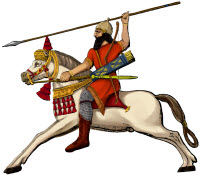|

|
|
|
|
Luxury Brands and Fashion: A Journey Through Time

Fashion has usually been an expression of identity, fame, and creativity. From the gilded threads of historical empires to the modern designs of contemporary luxurious brands, fashion is a consistent mirrored image of society's values, dreams, and innovations. Jay Edition brings the top of luxury to online shopping, presenting clients a curated choice of the best manufacturers from around the globe. But to definitely appreciate luxury style these days, we need to take a step again in time and explore its charming origins—rooted in historic civilizations, biblical references, and the history of workmanship.
Ancient Luxury: The Beginning of Fashion
Fashion's luxury repute dates back to the sector’s earliest civilizations. The Egyptians, for instance, had been pioneers in transforming regular clothing into symbols of popularity. Around 3100 BC, Egyptian pharaohs wore intricate linen clothes, embellished with treasured stones and gold. Their use of jewelry, not only for aesthetics but as a signal of divine desire, became an early indicator of ways luxurious and power had been intertwined.
In Mesopotamia, round 4000 BC, weaving techniques advanced to create richly patterned textiles that symbolized wealth and social standing. The use of distinct dyes like Tyrian crimson (made from the glands of sea snails) in garments became a privilege reserved for royalty and the elite. This ancient trend of shade-driven prestige is one that has transcended millennia, still seen today inside the manner luxurious brands use unique colorations and materials to indicate exclusivity.
Fashion inside the Bible: Signifiers of Wealth and Status
The Bible contains numerous references to luxurious and style, providing perception into how apparel turned into each purposeful and symbolic. In Genesis, Joseph’s "coat of many colours" (Genesis 37:3) is possibly the most well-known biblical style piece. This garment changed into a bodily symbol of his father Jacob’s favoritism, representing each love and the improved fame within his own family. The use of color and satisfactory craftsmanship in Joseph's coat may be likened to the craftsmanship and unique identity markers that luxurious fashion homes, such as Hermès or Chanel, use to differentiate their merchandise these days.
In the e book of Exodus, clothing was imperative to religious ceremonies and societal roles. Priests wore finely woven linen clothes (Exodus 28:5-6) embroidered with gold and embellished with gem stones, marking their sacred duties and excessive societal status. This attention to detail and symbolic design laid the inspiration for the problematic craftsmanship we see in today's haute couture.
The Roman Empire and the Birth of Fashion Statements
As the Roman Empire rose to strength, fashion developed further into an expression of wealth and have an impact on. Roman residents wore togas and tunics crafted from silk imported from the a ways reaches of Asia, symbolizing their worldwide attain and huge wealth. The toga itself, a easy but elegant garment, have become synonymous with Roman citizenship and strength. Only the elite have been permitted to put on certain styles, just like modern day exclusivity located in luxury brands like Gucci and Louis Vuitton.
Moreover, Roman girls wore stolas, and their accessories of desire were gold, pearls, and precious gems. Hairstyles and cosmetics were additionally a huge part of their style identity, reflecting the importance of presentation in retaining one's social standing—standards which can be echoed in nowadays’s style industry, where complete appears are meticulously crafted.
Medieval Fashion and the Rise of Sumptuary Laws
As Europe entered the Middle Ages, style continued to define social hierarchies. Kings, queens, and the Aristocracy wore clothes of velvet, silk, and fur, whilst the commoners had access simplest to difficult woolen fabrics. The extravagant use of gold thread and rare dyes have become markers of excessive wealth and electricity. In a few cases, laws were enacted to save you the decrease lessons from imitating the get dressed of the elite. These "sumptuary laws" regulated the fabrics, colorings, and patterns human beings may want to wear, reinforcing the divide among the training. Today, the exclusivity and excessive price factors of luxury style brands echo this lifestyle, retaining the idea of fashion as a marker of reputation and wealth.
Renaissance: The Birth of Haute Couture
The Renaissance delivered about a newfound appreciation for artwork, style, and luxury. This become the generation whilst fashion houses commenced to take form, tailoring garments to the particular goals of the aristocracy. Italian and French noblewomen, specially, had been known for their complex gowns made from silk, velvet, and brocade. Sumptuous fabric, exact embroidery, and complicated lacework had been on the heart of Renaissance style, much like they may be these days in brands such as Valentino or Dolce & Gabbana.
The Renaissance also saw the upward push of "court docket get dressed," wherein monarchs like Louis XIV of France grew to become style right into a symbol of country wide identification and energy. The Sun King's opulent cloth cabinet was packed with finely crafted clothes that set tendencies across Europe. His use of tricky wigs, lace, and diamonds have become synonymous with French luxurious, laying the inspiration for Paris to grow to be the fashion capital it stays these days.
Modern Luxury Brands: Craftsmanship Meets Innovation
Fast forward to the nineteenth and 20th centuries, and the seeds of the posh fashion enterprise as we know it were sown. Iconic style houses along with Chanel, based in 1910, revolutionized ladies’s fashion with undying, elegant designs. Coco Chanel's vision of luxury turned into now not pretty much apparel however approximately lifestyle—something that resonates with how cutting-edge luxury manufacturers, along with Jay Edition, offer curated purchasing experiences that cater to the refined tastes of their clients.
Louis Vuitton, established in 1854, started with trunks and bags, combining practicality with luxury. Today, the emblem is a international powerhouse, regarded for its monogrammed designs and pinnacle-tier craftsmanship. Much just like the ancient artisans who labored tirelessly to weave gold into the garments of royalty, these days’s luxury brands emphasize artisanal craftsmanship and exclusivity. The hand-stitched luggage of Hermès, the bold styles of Versace, and the timeless fits of Armani all carry on the legacy of fashion as a symbol of repute, identity, and artistry.
레플리카사이트 and Modern Fashion
The desire to own luxury items has also led to the rise of the 레플리카사이트 (replica sites), where consumers can find replicas of high-end fashion pieces at a fraction of the cost. While these sites offer an alternative to purchasing authentic luxury goods, they also raise important questions about quality, craftsmanship, and authenticity. The exclusivity of true luxury brands is deeply rooted in the history of fashion—whether it’s the intricate embroidery of Renaissance gowns or the fine leather of a Louis Vuitton bag. When choosing luxury, consumers are investing in more than just a product; they are investing in centuries of heritage, craftsmanship, and status.
Interesting Facts About Fashion in History
- Tyrian Purple: In historic times, the dye used to create red fabric became so high priced that most effective royalty may want to afford it. It took approximately 10,000 sea snails to supply one gram of Tyrian red dye, and is the reason why the coloration became related to wealth and power.
- Egyptian Cosmetics: Egyptians have been pioneers of beauty and skin care, the usage of herbal components like honey and almond oil for skin treatments. Both men and women applied makeup, inclusive of kohl eyeliner, which became believed to shield their eyes from the cruel solar or even provide spiritual protection.
- Roman Shoes: Footwear in historical Rome become additionally a status image. Senators and patricians wore red or crimson sandals, even as plebeians and slaves wore plain leather shoes, highlighting their social position.
- Biblical Attire: In biblical instances, the quality of one's garb regularly meditated their wealth and status. Fine linen, cited a couple of times within the Bible (e.G., Proverbs 31:22), turned into taken into consideration a pricey fabric reserved for the rich and respected in religious settings.
The Timeless Appeal of Luxury Fashion
Luxury style these days is an instantaneous descendant of these historical practices. It draws thought from history, cherishes craftsmanship, and emphasizes exclusivity, simply as style did lots of years in the past. Brands like Chanel, Gucci, Dior, and Louis Vuitton have constructed empires on the principles of rarity, artistry, and identification.
At Jay Edition, we accept as true with that luxurious is extra than just a label—it’s an enjoy, a legacy, and a story woven into each thread. Whether you're seeking to spend money on undying portions or discover the today's developments, our platform connects you to the sector’s leading luxury manufacturers, making sure which you are a part of a tradition that spans millennia.
Tags: fashion Luxury fashion Luxury Fashion history Ancient luxury Biblical fashion luxury brands Designer brands Fashion trends Luxury lifestyle
Kid's Bible Maps
Bible History Online
The Geography of the Bible
© Bible History Online (https://bible-history.com)
Made by Network Local

Kids Bible Maps
About
Us
Contact Us
To
Parents
To
Teachers
Kids Bible Blog
Using Our Maps
Mission
Statement
Doctrinal
Statement
Instructions
Popular Bible Maps
The Journey of Abraham
Moses and the Exodus
Joshua and the Land
The Kingdom of David
The Kingdom of Solomon
Israel in Jesus' Time
Paul's First Journey
The Land of Israel
The Land of Egypt
The Land of Assyria
The Land of Babylon
The Land of Persia
The Land of Greece
The City of Rome
Noah's Ark and Mt. Ararat
The Tower of Babel
The Old Testament World
The New Testament World
Ancient Empires
Moses and the 10 Plagues
Ancient Peoples
The 10 Commandments
The 12 Tribes of Israel
The Ministry of Jesus
Bible Stories with Maps
Daniel in the Lions Den
David and Goliath
Baby Moses
Jesus and the Little Children
Coloring Book Images
Coloring Book
Donkey
Camel
Lamb
Noah's Ark
Noah's 3 Sons
Abraham
Sheep
Lion